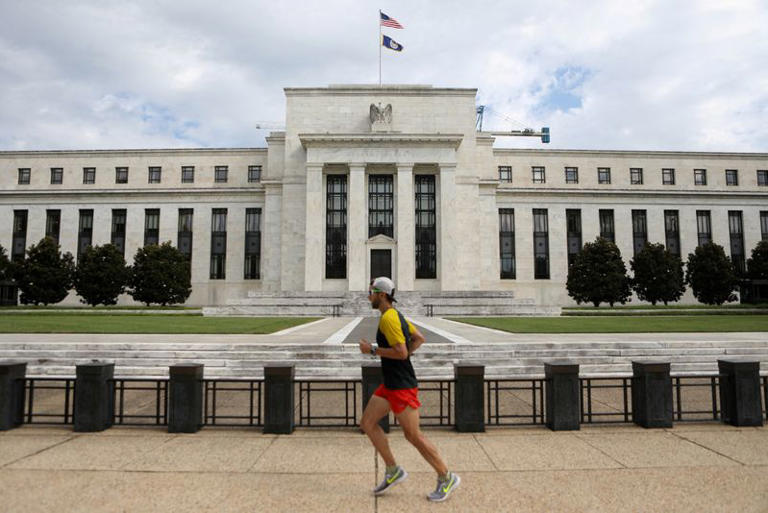The Federal Reserve’s policy meeting, scheduled for July 30-31, is poised to be a key moment for investors and policymakers alike. As the central bank convenes, there is widespread anticipation that it will hold interest rates steady while potentially setting the stage for rate cuts in the near future. This expectation is largely driven by recent data suggesting that inflation is edging closer to the Fed’s 2% target, a sign that the central bank’s stringent monetary policies might be having the desired effect.
Ahead of the meeting, Fed officials have been cautious about committing to a specific timeline for rate cuts. However, recent economic data have offered them reasons for cautious optimism. For instance, the personal consumption expenditures (PCE) price index, which is the Fed’s preferred measure of inflation, has shown a significant moderation. This index, which experienced a steep rise of up to 7.1% on a year-over-year basis in 2022, increased by just 2.5% in June after a 2.6% gain in May. This decline in inflation is particularly noteworthy because it indicates a marked easing of price pressures.
Moreover, recent data highlight a broader trend of decelerating inflation. Since March, the annualized month-to-month changes in the PCE price index have averaged around 1.5%, which is half a percentage point below the Fed’s 2% target. A closely watched measure that excludes volatile food and energy prices is currently trending at 2.3%, also aligning closely with the Fed’s goal. This alignment with the target could prompt the Fed to revise its description of inflation in its policy statement, potentially moving away from labeling it as “elevated” to acknowledging a more controlled inflationary environment.
Jim Bullard, the former President of the St. Louis Fed, suggested that even a slight adjustment in the Fed’s language to describe inflation as “moderately elevated” could be a significant signal to the markets. Such a change would reflect the central bank’s recognition of the progress made in reducing inflation and its belief that this trend will continue. This shift in language might precede actual rate cuts, particularly if the forthcoming data supports the current trend of easing inflation.
The Fed has maintained its benchmark interest rate at 5.25%-5.50% since last July, marking one of the longest periods of tight monetary policy in recent history. Despite concerns that these high rates could lead to a recession, the economy has managed to navigate these challenges relatively well. Inflation has decreased, and while the unemployment rate has edged up to 4.1%, it remains close to what many Fed officials consider full employment.
Recent economic reports have painted a mixed picture. On one hand, there are signs of economic softness, such as disappointing home sales and rising loan delinquencies. On the other hand, the most recent report on overall economic output was surprisingly robust, showing a 2.8% annualized growth rate in the second quarter. This figure exceeds the Fed’s estimate of the economy’s underlying potential growth, which is approximately 1.8%. This indicates that while economic growth is slowing, it is doing so from a strong position.
The Fed’s policy statement, scheduled for release on Wednesday at 2 p.m. EDT (1800 GMT), will be closely scrutinized for any hints about future monetary policy. Fed Chair Jerome Powell will hold a press conference shortly after the statement, adding further context to the Fed’s decisions. Markets are keenly watching for any indications that the Fed might be ready to implement rate cuts, with many investors expecting at least a 25 basis point reduction in September. This potential cut would mark the beginning of reversing the most rapid series of rate hikes seen in four decades.
Political considerations also add an additional layer of complexity to the Fed’s decision-making process. The current U.S. presidential race has been marked by significant events, including an assassination attempt on former President Donald Trump and the withdrawal of President Joe Biden, who was replaced by Vice President Kamala Harris as the Democratic nominee. The Fed’s decisions could be perceived as politically motivated, particularly given Trump’s critical stance on the central bank and its leadership.
Among Fed officials, there is a broad consensus that inflation is easing. Even some of the more hawkish members, such as Fed Governor Christopher Waller, have acknowledged that recent data might justify rate cuts. Waller has pointed to both the inflation data and the labor market’s performance as key factors influencing the need for policy adjustments.
The potential for rate cuts could have substantial implications for the broader economy. Lower interest rates might translate into reduced borrowing costs for mortgages, credit cards, and other financial products. This, in turn, could stimulate consumer spending and economic activity. How these changes will play out in the political arena remains to be seen, but they are likely to influence both economic conditions and electoral dynamics.
Overall, the Federal Reserve is navigating a complex landscape as it balances the need to address persistent inflation with the imperative to support economic growth. The outcome of this week’s meeting will provide crucial insights into the central bank’s approach to monetary policy and set the stage for its actions in the coming months.
